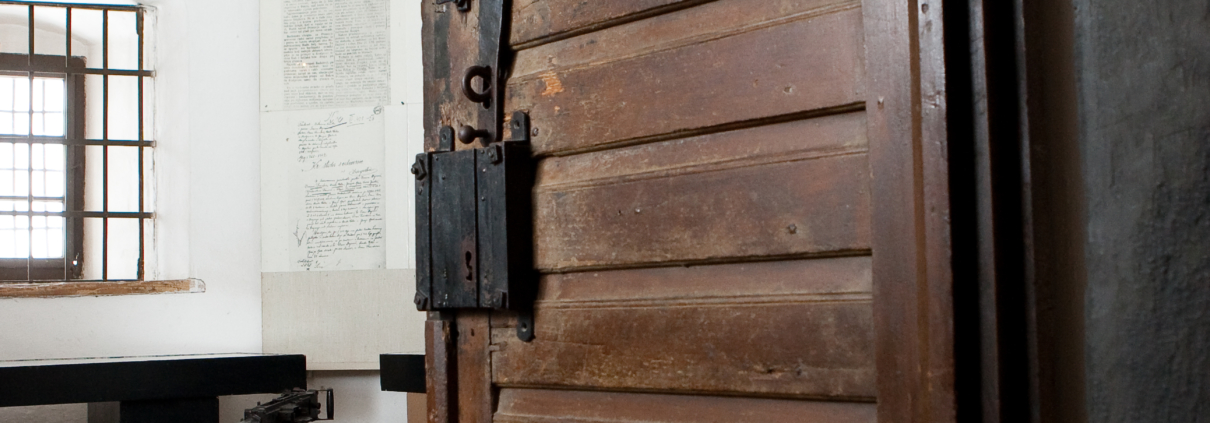ZATVORSKO VRIJEME / PRISON TIME
ZATVORSKO VRIJEME
Od 1865. godine do kraja Drugog svjetskog rata, Frankopanska kula je bila zatvor Sudbenog stola, obzirom da je u to vrijeme Ogulin bio kotarsko središte. U uspomenu na to razdoblje povijesti ogulinskog kaštela, u Zavičajnom muzeju Ogulin sačuvana je tzv. Ćelija br. 6. Ćelija je smještena na 2. katu Muzeja, ima visoki kupolasti svod i ovalnog je oblika, promjera oko 5 metara. Na ćeliji su u zatvorsko vrijeme dva prozorčića imala dvostruke željezne rešetke a drvena, masivna, željezom okovana vrata imala su četverouglasti prozorčić prekriven staklom i zaklopcem.
U kutu ćelije i danas se nalazi masivna gusana peć, okovana čvrstim željeznim obručima, a ložište peći nalazi se u hodniku. Povijesni podaci govore kako su “komfor” ćelije činile drvene “palače” (daščani ležaj malo izdignut od poda) i drvena “kibla” (kanta za nuždu). U Ćeliji br. 6 je istovremeno bilo smješteno do pet zatvorenika.
Zidovi ćelije u zatvorsko su vrijeme bili ispisani brojnim imenima i porukama zatvorenika, no kasnijom obnovom prostorije originalna je žbuka, nažalost, obijena i zamijenjena novom.
PRISON TIME
From 1865 until the end of the World War II, the Frankopan Tower was the prison of the Court Table, given that at that time Ogulin was the district centre. In memory of that period in the history of the Ogulin castle, the so-called Cell no. 6 was preserved in the Ogulin Heritage Museum. The cell is located on the second floor of the Museum, it has a high vaulted ceiling and an oval shape, about 5 meters in diameter. In the prison time, two small windows had double iron bars and the wooden, massive, iron-bound door had a small square window covered with glass and a shutter.
In the corner of the cell, there is still a massive furnace, chained with solid iron rings, and the pan of the furnace is in the corridor. Historical data shows that the “comfort” of the cells consisted of wooden “palaces” (a wooden bed slightly raised from the floor) and a wooden “kibla” (toilet bucket). In the cell no. 6 housed up to five prisoners at the same time.
During the prison time, the walls of the cell were inscribed with numerous names and messages of prisoners, but during the later refurbishment of the room, the original plaster was unfortunately peeled off and replaced with a new one.



